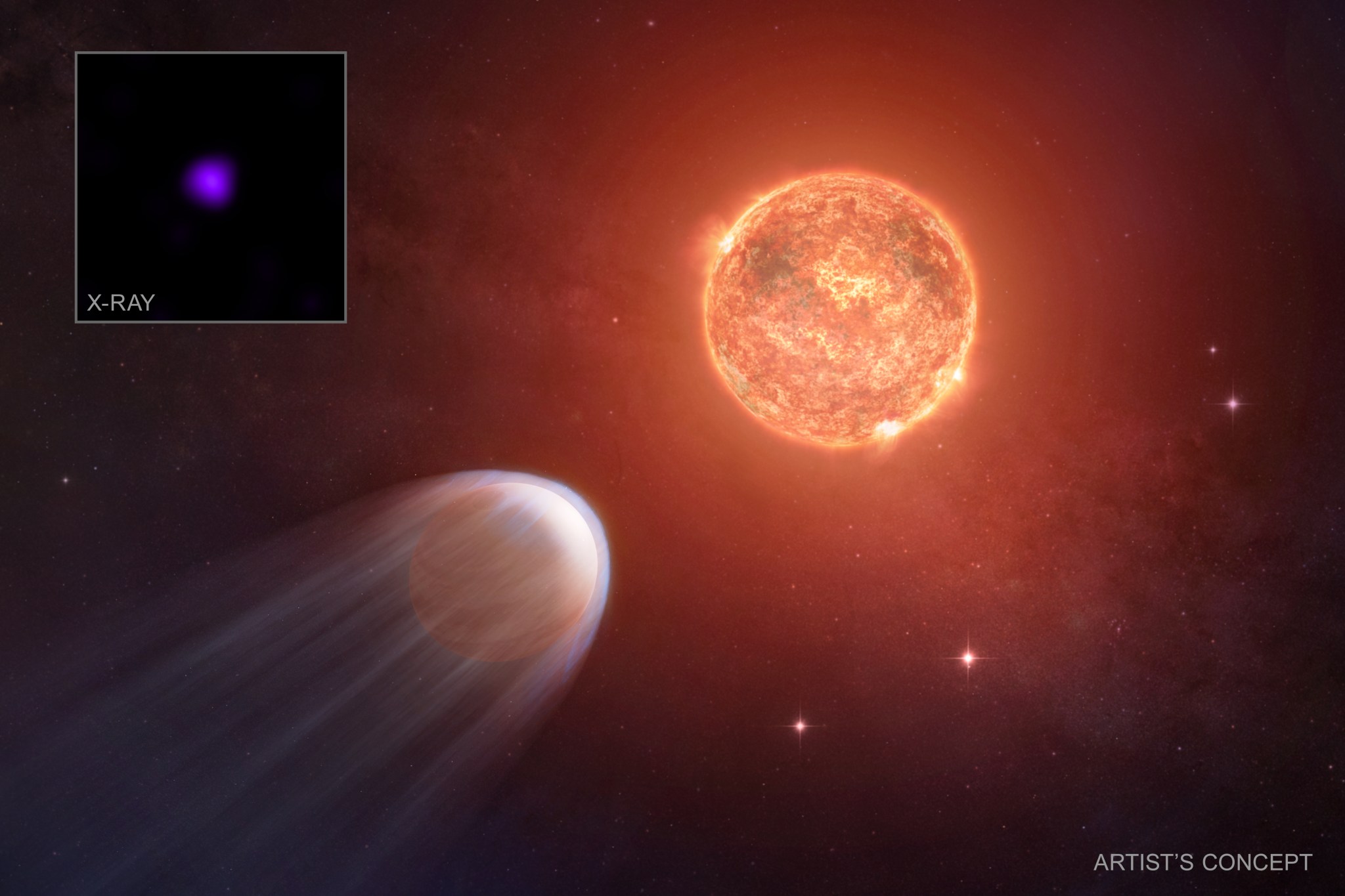
A star is unleashing a barrage of X-rays that is causing a closely-orbiting, young planet to wither away an astonishing rate, according to a new study using data from NASA's Chandra X-ray Observatory and described in our latest press release. A team of researchers has determined that this planet will go from the size of Jupiter down to a small, barren world.
This graphic provides a visual representation of what astronomers think is happening around the star (known as TOI 1227) and a planet that is orbiting it at a fraction the distance between Mercury and the Sun. This "baby" planet, called TOI 1227 b, is just about 8 million years old, about a thousand times younger than our Sun. The main panel is an artist's concept that shows the Jupiter-sized planet (lower left) around TOI 1227, which is a faint red star. Powerful X-rays from the star's surface are tearing away the atmosphere of the planet, represented by the blue tail. The star's X-rays may eventually completely remove the atmosphere.
The team used new Chandra data - seen in the inset - to measure the amounts of X-rays from TOI 1227 that are striking the planet. Using computer models of the effects of these X-rays, they concluded they will have a transformative effect, rapidly stripping away the planet's atmosphere. They estimate that the planet is losing a mass equivalent to a full Earth's atmosphere about every 200 years.
The researchers used different sets of data to estimate the age of TOI 1227 b. One method exploits measurements of how TOI 1227 b's host star moves through space in comparison to nearby populations of stars with known ages. A second method compared the brightness and surface temperature of the star with theoretical models of evolving stars. The very young age of TOI 1227 b makes it the second youngest planet ever to be observed passing in front of its host star (a so-called transit). Previously the planet had been estimated by others to be about 11 million years old.
Of all the exoplanets astronomers have found with ages less than 50 million years, TOI 1227 b stands out for having the longest year and the host planet with the lowest mass. These properties, and the high dose of X-rays it is receiving, make it an outstanding target for future observations.
A paper describing these results has been accepted publication in The Astrophysical Journal and a preprint is available here. The authors of the paper are Attila Varga (Rochester Institute of Technology), Joel Kastner (Rochester Institute of Technology), Alexander Binks (University of Tubingen, Germany), Hans Moritz Guenther (Massachusetts Institute of Technology), and Simon J. Murphy (University of New South Wales Canberra in Australia).
NASA's Marshall Space Flight Center in Huntsville, Alabama, manages the Chandra program. The Smithsonian Astrophysical Observatory's Chandra X-ray Center controls science operations from Cambridge, Massachusetts, and flight operations from Burlington, Massachusetts.






